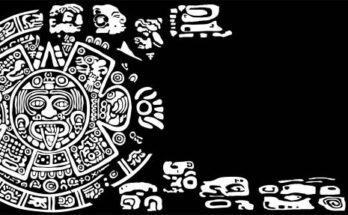Religions have played a pivotal role in shaping human societies for millennia, providing a framework for understanding the world, moral guidance, and a sense of purpose. However, throughout history, numerous religions have faded into obscurity, their once-vibrant beliefs and practices lost to time. This phenomenon prompts us to explore the intriguing question: Why do beliefs die? In this article, we will delve into the various factors that contribute to the decline and eventual extinction of lost religions, examining social, cultural, and psychological aspects that play a role in the demise of once-thriving belief systems.
Changing Societal Dynamics
 (Photo from iStock)
(Photo from iStock)
One of the primary reasons for the decline of religions lies in the ever-changing dynamics of human societies. As civilizations evolve, so do their values, norms, and priorities. A religion that once resonated deeply with a particular community may find itself incompatible with the changing needs and perspectives of future generations. Societal shifts, such as advancements in science and technology, changing political structures, and economic developments, can contribute to the erosion of traditional belief systems.
For instance, the industrial revolution and the subsequent rise of secularism in the Western world led to a decline in the influence of organized religions. As societies became more focused on scientific explanations for natural phenomena and embraced secular governance, the relevance of certain religious doctrines waned.
Cultural Adaptation and Syncretism
Cultural adaptation and syncretism, while often crucial for the survival of religions, can also contribute to their demise. Religions that fail to adapt to cultural changes or integrate elements from other belief systems may struggle to remain relevant. Conversely, those that undergo successful syncretism may give rise to new hybrid faiths, leaving the original beliefs diluted or overshadowed.
Ancient polytheistic religions, for example, frequently underwent syncretism as conquerors and traders introduced foreign deities to local pantheons. The resulting amalgamation of beliefs often led to the abandonment of traditional gods and practices, as communities embraced the more inclusive and cosmopolitan aspects of the new religious landscape.
Loss of Political Patronage
Throughout history, the patronage of rulers and political elites has played a crucial role in the survival and flourishing of religions. When political support wanes or shifts to a different faith, it can have profound implications for the fate of a religion. The decline of state-sponsored religions in ancient Rome and Greece, for instance, was accompanied by the rise of Christianity, which eventually became the dominant faith in the Western world.
Similarly, in more recent times, the secularization of governments in various countries has led to a decrease in the influence of traditional religions. As political structures evolve, so too do the alliances between political power and religious institutions, impacting the longevity of belief systems.
Cultural and Religious Suppression
 (Photo from iStock)
(Photo from iStock)
Beliefs can also face extinction due to intentional efforts to suppress or eradicate them. Historical examples abound, from the suppression of indigenous religions during colonization to the persecution of religious minorities by dominant groups. The imposition of a single religious or ideological framework often leads to the erasure of diverse belief systems.
The destruction of ancient religious practices by conquering civilizations, such as the Spanish conquest of the Aztec Empire. Resulted in the loss of invaluable cultural and religious knowledge. Similarly, the forced conversion of indigenous peoples during European colonization. Led to the suppression of traditional belief systems, contributing to their decline.
Economic and Environmental Factors
Economic and environmental factors can exert significant influence on the survival of belief systems. Societies facing economic hardships or environmental crises may undergo profound changes, leading to the abandonment of traditional religious practices in favor of more pragmatic concerns.
For example, in times of famine or ecological collapse, communities may prioritize survival over religious rituals. Gradually relegating once-central beliefs to the periphery of their lives. Economic prosperity, on the other hand, may lead to a decline in reliance on religious explanations for natural phenomena, as science and technology offer alternative solutions and perspectives.
Internal Strife and Sectarianism
Internal conflicts and sectarian divisions within religious communities can also contribute to the decline of belief systems. Disputes over interpretations of sacred texts, doctrinal differences, and power struggles among religious leaders can fracture a once-unified faith. Leading to the splintering of sects or the outright abandonment of the religion by disillusioned followers.
Historical examples abound, from the Great Schism in Christianity to the Sunni-Shi’a divide in Islam. Internal strife often weakens the cohesion of religious communities. Making them more susceptible to external pressures and accelerating the decline of the overall belief system.
Conclusion
The phenomenon of lost religions raises profound questions about the nature of human belief. And the factors that contribute to the decline of once-thriving faiths. Whether due to changing societal dynamics, cultural shifts. Political realignments, suppression, economic factors, or internal conflicts, the demise of religions reflects the intricate interplay of numerous forces.
While some lost religions have left behind archaeological remnants and historical records, others have vanished without a trace. Their stories relegated to the realm of speculation and conjecture. As we reflect on the reasons why beliefs die, we gain insights. Not only into the fragility of religious systems but also into the resilience of human spirituality. Which continues to evolve and adapt, shaping the course of history and the landscape of belief for generations to come.
In the face of the ever-changing tapestry of human civilization. Lost religions stand as silent witnesses to the ebb and flow of beliefs. The intricate dance between tradition and adaptation, societal progress and regression, grants us a nuanced understanding of why faiths falter. The legacy of these vanished beliefs invites contemplation on the impermanence of religious ideologies. And the enduring quest for meaning in the human experience. As we navigate the complex interplay of cultural, political. And psychological forces that contribute to the demise of religions. We uncover not only the reasons behind their decline. But, also the enduring quest for spiritual expression that transcends the boundaries of time.




